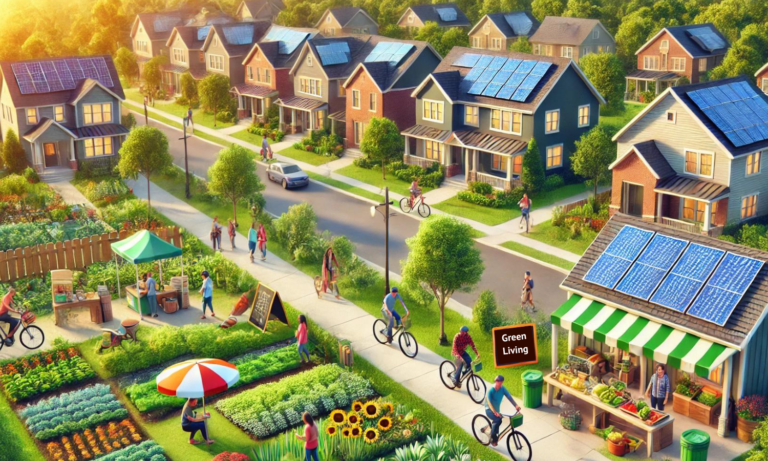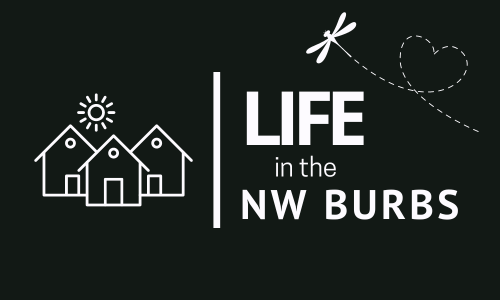Living a green life isn’t just about reducing your carbon footprint; it’s about creating a healthier, more sustainable environment for you and your family. If you’re in the Chicago suburbs, you’re in luck! These areas offer a unique blend of urban convenience and natural beauty, making it easier than ever to embrace green living. But what does green living mean, and how can you integrate it into your daily routine? Let’s dive into the world of eco-friendly living in the Chicago suburbs.

Why Choose Green Living?
Have you ever wondered why so many people are turning to green living? It’s not just a trend; it’s a lifestyle choice that offers numerous benefits. Green living helps you save money, improve your health, and contribute to a sustainable future. Imagine reducing your utility bills while enjoying a healthier home environment—sounds great, right?
Choosing green living means making mindful decisions that positively impact the environment and your well-being. It’s about small changes that add up to significant benefits for you, for your family, for your community, and for our world. Let’s explore how you can incorporate green living into your suburban lifestyle.
Energy-Efficient Homes
One of the first steps to green living is transforming your home into an energy-efficient haven. Start with simple changes like switching to LED bulbs, using smart thermostats, and ensuring your home is well-insulated. These changes can drastically reduce your energy consumption and lower your utility bills.
Energy-efficient appliances are another great investment. Look for the ENERGY STAR label when purchasing new devices. These appliances use less energy, helping you save money while reducing your environmental impact.
Insulation and Windows
Proper insulation is crucial for maintaining a comfortable temperature in your home without over-relying on heating and cooling systems. Double-glazed windows and insulated doors also play an important role in energy conservation.
Sustainable Landscaping
Green living extends beyond the walls of your home. Your yard can be a sustainable oasis with a few eco-friendly practices. Start by choosing native plants that require less water and maintenance. This not only conserves water but also supports local wildlife.
Composting
Start a compost pile to recycle kitchen scraps and yard waste. Composting enriches your soil, reduces the need for chemical fertilizers, and helps keep waste out of landfills. It’s a simple way to make a big difference.
Rain Gardens
Consider installing a rain garden to manage stormwater runoff. Rain gardens are designed to absorb rainwater, reducing the risk of flooding and erosion while providing a habitat for native plants and animals.
Green Transportation
How you get around also impacts your carbon footprint. The Chicago suburbs offer various green transportation options that make it easy to reduce your reliance on fossil fuels.
Public Transit and Biking
Take advantage of the excellent public transportation system. Buses and trains are eco-friendly alternatives to driving. If possible, bike to your destination. It’s a great way to stay fit while reducing emissions.
Electric and Hybrid Vehicles
Consider investing in an electric or hybrid vehicle. These cars produce fewer emissions than traditional gas-powered vehicles, and many models offer impressive mileage and performance.
Eco-Friendly Shopping
Green living includes making sustainable choices when shopping. Look for products with minimal packaging, and choose items made from recycled or renewable materials.
Farmers’ Markets
Support local farmers by shopping at farmers’ markets. Fresh, locally-grown produce has a smaller carbon footprint than imported goods. Plus, it’s a great way to enjoy seasonal fruits and vegetables.
Reusable Bags
Always carry reusable bags when you shop. This simple habit can significantly reduce the number of plastic bags that end up in landfills and oceans.
Waste Reduction and Recycling
Reducing waste is a cornerstone of green living. Implementing effective waste reduction and recycling practices can make a substantial difference.
Reduce, Reuse, Recycle
Follow the three Rs: reduce, reuse, and recycle. Reduce your consumption, reuse items whenever possible, and recycle materials like paper, plastic, and glass.
Electronic Recycling
Dispose of electronic waste properly by taking it to designated e-waste recycling centers. This prevents hazardous materials from contaminating the environment.
Supporting Local Businesses
Supporting local businesses is not only good for the economy but also for the environment. Local businesses often have a smaller carbon footprint compared to large corporations.
Eco-Friendly Products
Many local businesses offer eco-friendly products and services. From organic foods to sustainable clothing, buying local helps you find unique, environmentally-friendly items.
Community Impact
Shopping locally strengthens your community by keeping money within the local economy. It fosters a sense of community and supports local entrepreneurs.
Community Involvement
Engaging with your community is an essential part of green living. Participate in local environmental initiatives and encourage others to join.
Volunteer Opportunities
Look for volunteer opportunities with local environmental organizations. Whether it’s a park cleanup or a tree planting event, your involvement can make a big impact.
Green Events
Attend green events and workshops to learn more about sustainable practices and connect with like-minded individuals. These events are great for gaining new insights and staying motivated.
Healthy Living
Green living isn’t just about the environment; it’s also about improving your health. By making eco-friendly choices, you can create a healthier lifestyle for you and your family.
Organic Foods
Choose organic foods whenever possible. Organic farming practices are better for the environment and reduce your exposure to pesticides and other chemicals.
Non-Toxic Products
Use non-toxic cleaning and personal care products. Many conventional products contain harmful chemicals that can affect your health. Look for natural alternatives that are safer for your home and the environment.
Renewable Energy Sources
Harnessing renewable energy sources is a key component of green living. Solar, wind, and geothermal energy are excellent alternatives to fossil fuels.
Solar Panels
Consider installing solar panels on your home. Solar energy is a clean, renewable resource that can significantly reduce your energy bills and carbon footprint.
Wind Energy
If you live in a suitable area, small wind turbines can be an effective way to generate electricity. Wind energy is another clean, renewable resource that can help you live more sustainably.
Water Conservation
Water is a precious resource, and conserving it is an essential part of green living. Simple changes can make a big difference.
Low-Flow Fixtures
Install low-flow faucets, showerheads, and toilets to reduce water usage. These fixtures are designed to use less water without sacrificing performance.
Rainwater Harvesting
Collect rainwater for use in your garden. Rain barrels are an easy and effective way to conserve water and reduce your utility bills.
Green Spaces and Parks
The Chicago suburbs are home to numerous green spaces and parks that offer opportunities for outdoor recreation and relaxation.
Benefits of Green Spaces
Spending time in nature has numerous health benefits, including reduced stress and improved mental well-being. Green spaces also support biodiversity and help combat urban heat islands.
Park Activities
Take advantage of local parks by participating in activities like hiking, biking, and picnicking. Enjoying the outdoors is a great way to connect with nature and promote a healthy lifestyle.
Educational Resources
Educating yourself and others about green living is crucial for creating a sustainable future. Numerous resources are available to help you learn more about eco-friendly practices.
Books and Websites
There are countless books and websites dedicated to green living. These resources offer valuable information and tips for living sustainably.
Workshops and Classes
Attend workshops and classes on topics like composting, gardening, and energy efficiency. These educational opportunities can provide hands-on experience and deepen your understanding of green living.
Conclusion
Green living in the Chicago suburbs is not only possible but also incredibly rewarding. By making small changes in your daily routine, you can create a healthier, more sustainable lifestyle for yourself and your community. From energy-efficient homes to eco-friendly transportation, every step you take towards green living makes a difference. Embrace the green lifestyle and enjoy the numerous benefits it offers.
FAQs
1. What are the benefits of green living?
Green living offers numerous benefits, including cost savings, improved health, and a reduced environmental impact. It promotes a sustainable lifestyle that benefits both individuals and the community.
2. How can I make my home more energy-efficient?
You can make your home more energy-efficient by using LED bulbs, smart thermostats, and energy-efficient appliances. Proper insulation and double-glazed windows also help reduce energy consumption.
3. What is composting, and why is it important?
Composting is the process of recycling organic waste into nutrient-rich soil. It reduces the need for chemical fertilizers, decreases landfill waste, and enriches your garden soil.
4. How can I reduce my carbon footprint in the suburbs?
You can reduce your carbon footprint by using public transportation, biking, supporting local businesses, and practicing waste reduction and recycling. Making eco-friendly choices in your daily life also helps.
5. What are some renewable energy sources for my home?
Solar and wind energy are excellent renewable energy sources for homes. Installing solar panels or small wind turbines can help you generate clean, renewable electricity and reduce your reliance on fossil fuels.

